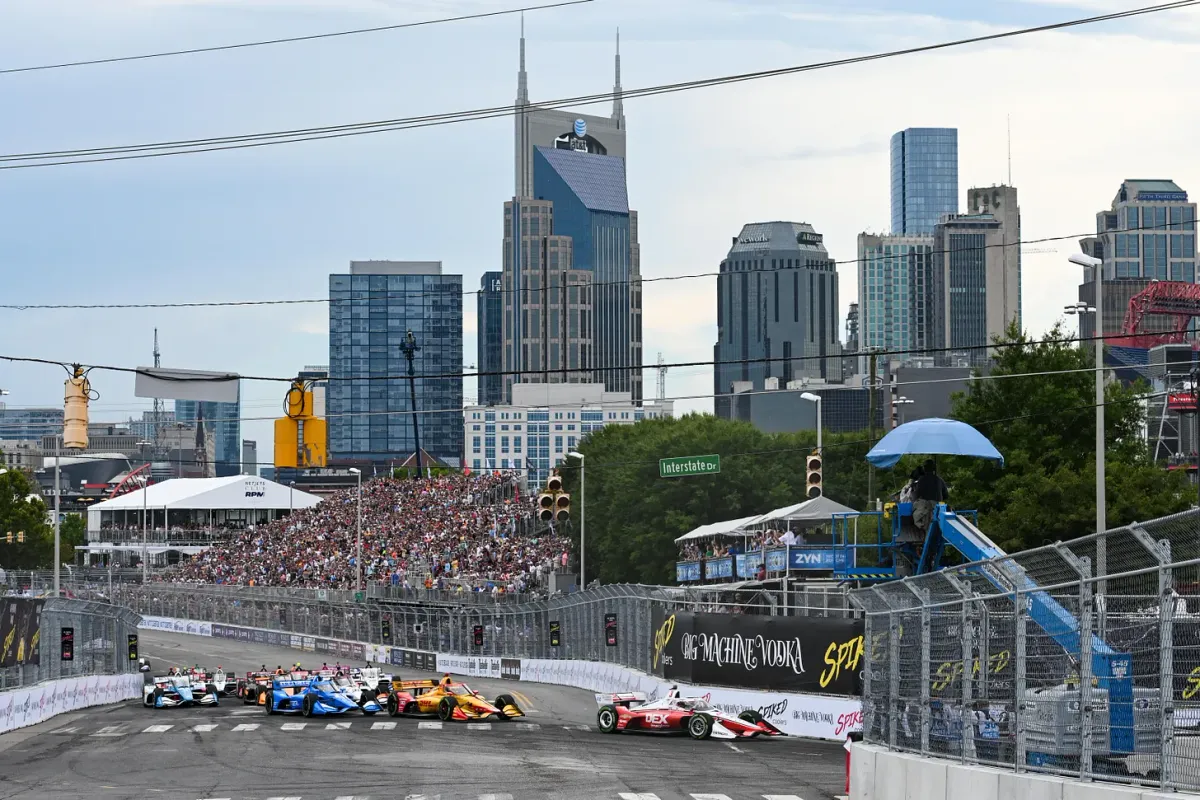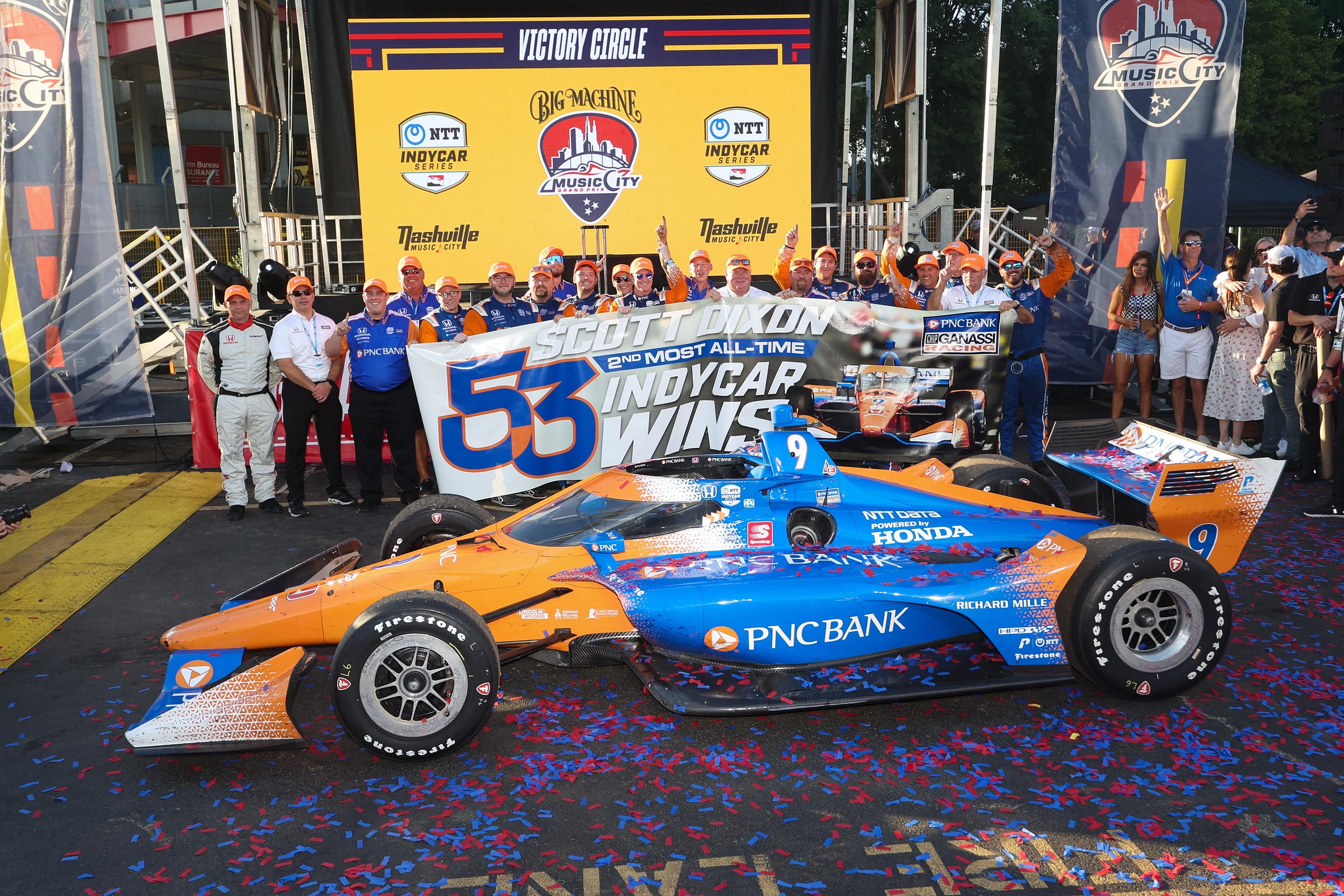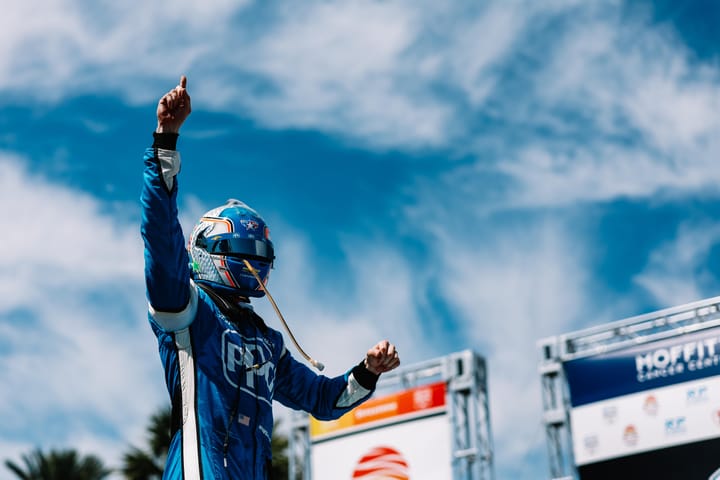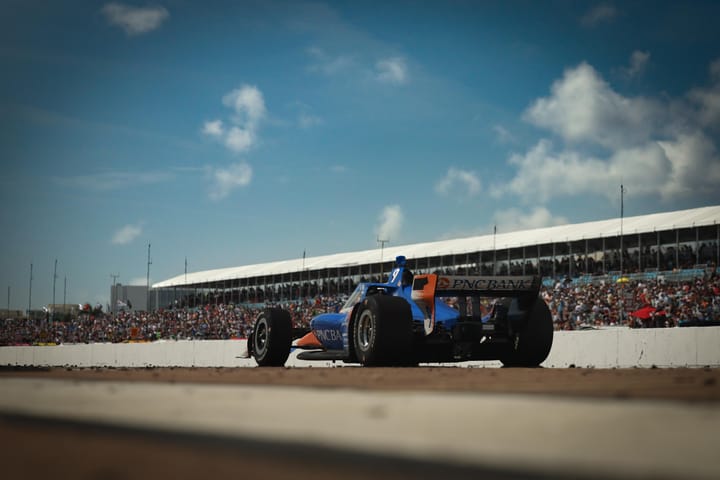IndyCar needs Nashville. Does Nashville need to change?

Thank god it didn’t rain during the race on Sunday. That could’ve been ugly.
The second iteration of Nashville’s Big Machine Music City Grand Prix was expected to be unpredictable — though maybe not as big of an unknown as last year’s inaugural event, which featured two red flags and 33/80 laps under caution for incidents.
It ended up being quite predictable, actually, with 38/80 laps run under caution, one red flag and the same questionable driving standards that left the IndyCar paddock last year wondering, “what the hell was that?” once again.
In 2021, Marcus Ericsson, who at one point went airborne after hitting another car, won the first MCGP right before the sunset in an event delayed by multiple crashes, one total track blockage, and vendor coolers spilling onto the racing surface.
This year, the major controversies happened in different areas of the track. The narrowed turn nine, where cars went from their top speeds near 180 mph off of the Korean Veterans Memorial Bridge into a tight 90 degree left hand corner, invited many drivers to, for lack of a better term, “just send it.”
In the highest profile incident, Team Penske’s Josef Newgarden, a Tennessee native and championship leader at one point during the race, dove for the inside and took such a wide arc on exit that Andretti Autosport’s Romain Grosjean, who has riled many drivers up with his aggressive and unforgiving style this year, had two options: back out or end his race in the wall. He chose the wall.

INDYCAR on NBC @IndyCaronNBC"If you're not aggressive back, then you get run over." On Josef Newgarden's battle with Romain Grosjean, Newgarden says "welcome to @IndyCar."
August 8th 202268 Retweets965 Likes
Newgarden called out Grosjean for his season of unforgiving corners and occasional contact, with Grosjean supporters chirping back and forth with Newgarden for a while on Twitter.
It all nearly overshadowed Scott Dixon breaking a tie with the one and only Mario Andretti for the second most IndyCar wins in history with 53. Dixon’s race was so quiet and unassuming it’s almost easy to forget he was in the race at all.
Only 15 cars were running at the end of the race. That’s the least since 14 cars finished 2018’s Pocono 500, marred by a major crash that left driver Robert Wickens partially paralyzed.
On Monday night’s Racing Family podcast, hosted by Racer magazine’s Marshall Pruett and Arrow McLaren SP Spotter Chris Wheeler, Ericsson and Rahal Letterman Lannigan Racing’s Jack Harvey agreed that Newgarden would have deserved an avoidable contact penalty for his move in most situations, but with IndyCar Race Control holding back on penalties in similar instances this season and Grosjean’s iffy record, it was probably the right call to let the drivers settle it on track.
Nashville’s tight corners and high speed sections over its iconic bridge create a spectacle, for better or for worse. I compare it to a NASCAR race at Bristol, and I don’t think that’s too far off. The driving standards weren’t great, usually cool heads blew their tops, and the winner wasn’t really the biggest story of an event that fans won’t forget for a while, even if it wasn’t the pristine driving we’ve come to expect from IndyCar.
The other major incident Sunday took place in the tight turns 4-8 across the river, where multiple cars were taken out from gearbox or suspension damage after a chain reaction caused contact.

INDYCAR on NBC @IndyCaronNBCGraham Rahal into Pato O'Ward -> O'Ward into Will Power. Just a mess of a chain reaction. #INDYCAR 📺 : @CNBC and @peacockTV 💻 : bit.ly/INDYonNBC
August 7th 202259 Retweets238 Likes
Racing Family discussed the factors that make Nashville into Crashville: the proximity to the conclusion of the championship making drivers more aggressive, the sweltering heat shortening tempers, the location of the restart zone and various inconsistencies there, and the list goes on.
All folks reach the same conclusion with this troublesome street circuit though: IndyCar needs Nashville.
It’s in IndyCar’s best interest to create an event that is safe for drivers and entertaining for fans. Could there be more policing of drivers to discourage disorderly driving? Probably, and you could do that without taking away from the wildest spectacle in racing.
It’s possible, as it is with all new street circuits, that this event might not have a very long shelf life. The cities of Cleveland, Baltimore, Houston, Sao Paolo and Edmonton can tell you that. Even Boston was supposed to have a race which fell through before the inaugural event.
Nashville has all the right ingredients for success, and perhaps a little too much aggression on the driver’s part. I’m not sure what the solution is — widening turn nine back out to discourage dive bombs and moving the restart zone back so cars are more strung out are two ideas.
But, despite this, real racing did happen at Nashville. Scott McLaughlin charged from the back to nearly squeak by Dixon at the line — it was the fourth closest road/street course finish in IndyCar history. Colton Herta recovered from early race issues to pass the nearly the whole field and finish in the top five. Dixon held off all challengers with sheer pace and a car that was hindered from early race contact.
Nashville put on a great demolition derby, yes. It also put on a great motorsports event, you just have to look for it underneath a pile of discarded carbon fiber pieces. Now, it just needs some focused attention on cleaning up the driving standards, and it could become less of a meme and more of a must watch race — for the right reasons this time.
(Top image: James Black/Penske Entertainment. Bottom image: Chris Owens/Penske Entertainment.)






Comments ()